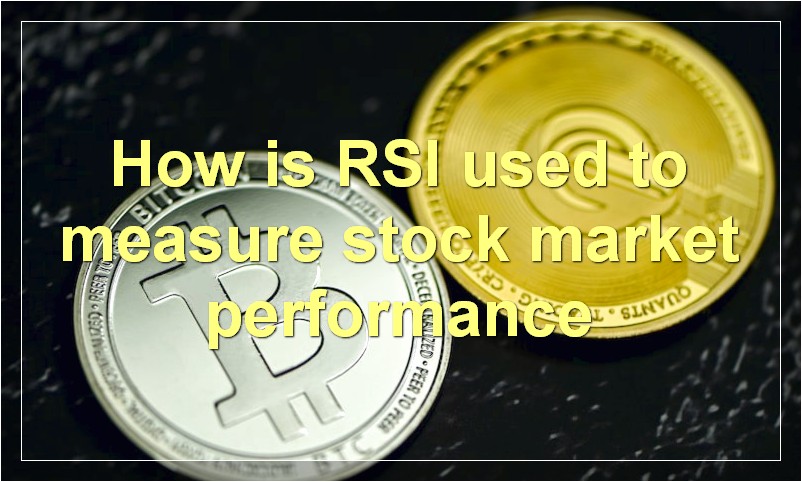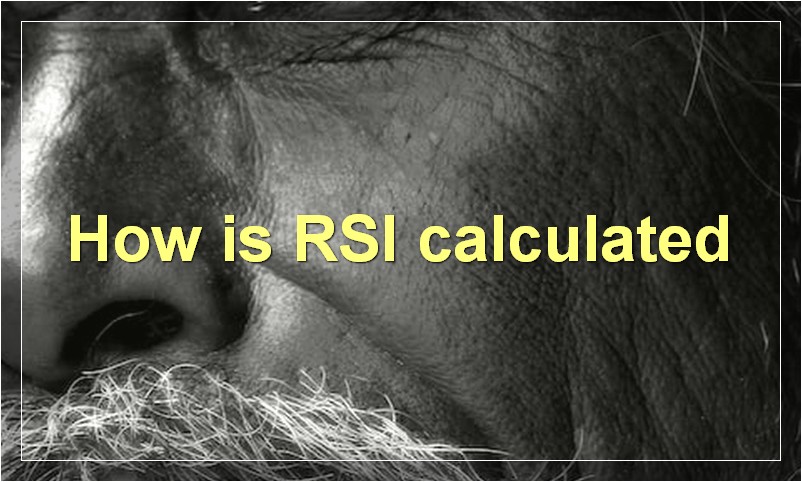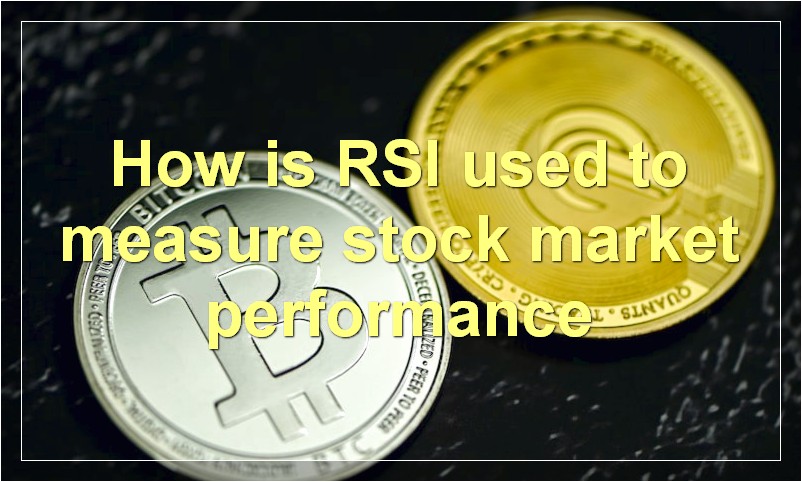If you’re looking to get started in the world of technical analysis, the Relative Strength Index (RSI) is a great place to start. In this article, we’ll give you everything you need to know about the RSI, including how to interpret it and how to use it in your trading.
What is Relative Strength Index (RSI) in the stock market
Relative strength index (RSI) is a momentum indicator that measures the speed and change of price movements. The RSI oscillates between 0 and 100. Traditionally, the RSI is considered overbought when above 70 and oversold when below 30.
RSI can be used to identify general trends as well as potential reversals. For example, a stock may be considered overbought after a sustained uptrend and ripe for a pullback, or it could be approaching oversold levels after a prolonged downtrend, signaling a possible reversal.
The RSI is also useful in spotting divergences. A bullish divergence occurs when the price makes a new low but the RSI doesn’t; this could be a sign that the sellers are losing steam and the buyers are about to take control. A bearish divergence happens when the price makes a new high but the RSI doesn’t; this could be a sign that the buyers are getting exhausted and the sellers are about to take control.
While the RSI is a popular indicator, it’s important to remember that it is just one tool in an investor’s toolbox. It should not be used in isolation, but rather in conjunction with other indicators and chart patterns.
How is RSI used to measure stock market performance

There are a number of ways to measure stock market performance, but one of the most popular is the Relative Strength Index (RSI). The RSI is a technical indicator that measures the magnitude and velocity of price movements. It is used to identify overbought and oversold conditions in the market, as well as to spot potential trend reversals.
The RSI is calculated using a formula that takes into account the closing prices of a security over a given period of time. The resulting number is then plotted on a scale of 0 to 100. A security is considered overbought when the RSI reaches 70 or above, and oversold when it falls below 30.
One of the main advantages of using the RSI is that it is relatively easy to interpret. A reading of 70 or above indicates that a security is becoming overbought and may be due for a correction. Conversely, a reading of 30 or below suggests that a security is becoming oversold and could be due for a rally.
The RSI can also be used to spot potential trend reversals. For example, if the RSI moves from overbought territory back into oversold territory, this could be an early warning sign that the current uptrend is losing steam. Similarly, if the RSI moves from oversold territory back into overbought territory, this could be an indication that a downtrend is coming to an end.
While the RSI is a useful tool, it is important to remember that it is only one part of a larger picture. As with any technical indicator, it should not be used in isolation but rather in conjunction with other indicators and fundamental analysis.
What are the benefits of using RSI
There are many benefits to using RSI, but some of the most notable ones include:
1. improved circulation
2. reduced pain and inflammation
3. increased range of motion
4. enhanced tissue healing
5. improved joint function
6. decreased risk of injury
What are the limitations of RSI
There are a few potential limitations when using the Relative Strength Index (RSI). First, RSI is a lagging indicator, which means it is based on past data. This can make it difficult to use as a predictive tool. Additionally, RSI can be influenced by large price movements, which can create false signals. Finally, RSI is a relative indicator, which means it is based on the relationship between two securities. This can make it difficult to interpret for those new to technical analysis.
How often is RSI updated
The RSI is updated every few weeks, with new features and bug fixes.
How is RSI calculated

There are a few different methods that can be used to calculate RSI, but the most common is the Wilder Smoothed RSI. This method uses a 14-period smoothed moving average of gains and losses. To calculate RSI, you first need to calculate the relative strength (RS). RS is simply the average gain over the past 14 periods divided by the average loss over the past 14 periods. From there, RSI is calculated as 100 – (100 / (1 + RS)).
TheWilder Smoothed RSIAccurate is considered to be more accurate than other methods, as it takes into account both the magnitude and frequency of changes in price. In addition, it is less likely to produce false signals than other methods.
What factors affect RSI readings
There are many factors that affect RSI readings. The type of sensor used, the size and weight of the object being measured, the surface area of the object, the temperature of the object, and the amount of pressure applied to the object all affect the reading. In addition, the age of the sensor, how often it is used, and how it is calibrated can also affect readings.
What do high and low RSI readings indicate
High RSI readings indicate that the security is overbought and low RSI readings indicate that the security is oversold.
What are some common trading strategies using RSI
There are many different trading strategies that can be used with the Relative Strength Index (RSI), but some of the most common ones are briefly described below.
1. RSI Overbought/Oversold Levels: The RSI can be used to identify overbought and oversold levels in the market. Generally, if the RSI is above 70, it is considered overbought, and if it is below 30, it is considered oversold. These levels can be used as entry and exit points for trades.
2. RSI Divergences: Another popular way to use the RSI is to look for divergences between the indicator and price action. A bullish divergence occurs when the RSI forms higher lows while price action forms lower lows. This can be used as a signal that price is about to move higher. A bearish divergence occurs when the RSI forms lower highs while price action forms higher highs. This can be used as a signal that price is about to move lower.
3. Support and Resistance Levels: The RSI can also be used to identify support and resistance levels in the market. These levels are usually based on previous highs and lows in the RSI. If the RSI bounces off of a certain level multiple times, that level can be used as a potential support or resistance level.
Are there any dangers in using RSI as a sole indicator when trading stocks
There are a few dangers to using RSI as your only indicator when trading stocks. The first is that RSI can become overbought or oversold, which means that the stock price might not actually be reflecting the true value of the company. Another danger is that RSI doesn’t take into account volume, so it’s possible to miss out on important clues about market sentiment. Finally, RSI is a lagging indicator, so it’s possible to enter or exit a trade too late.

